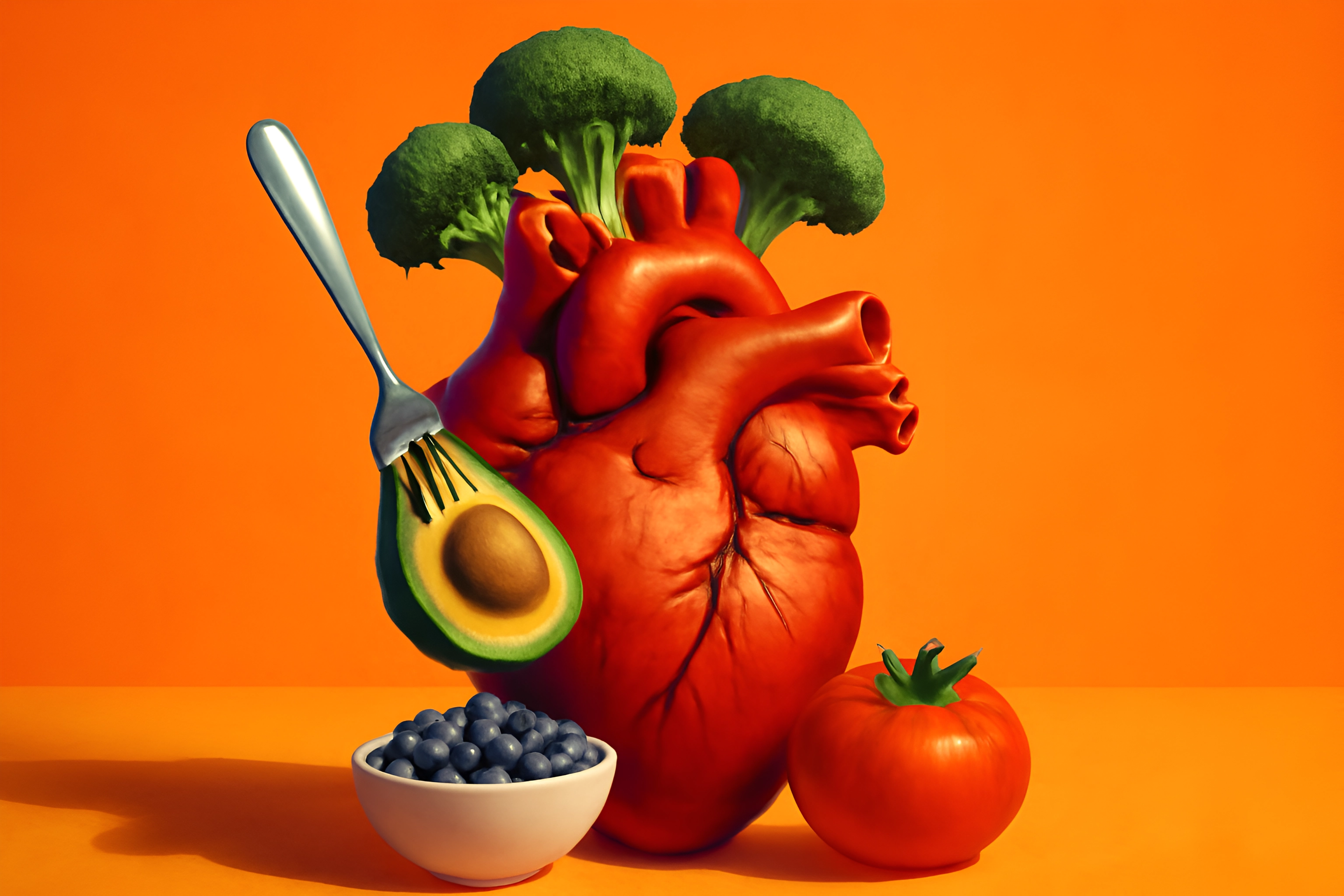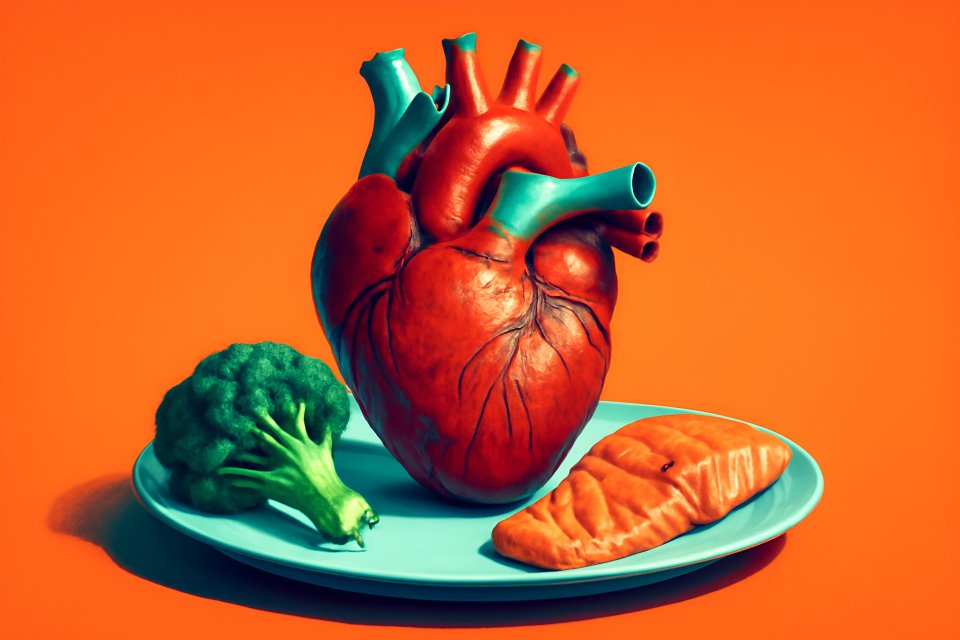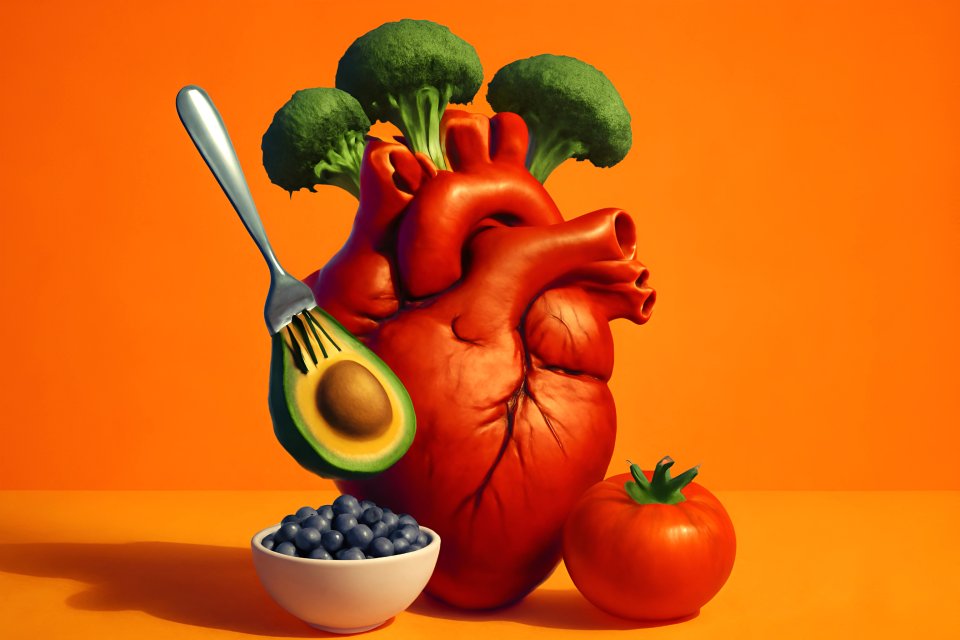
Entering your 50s, 60s, and beyond is a time for thriving, not just surviving. It’s a chapter filled with new adventures, deeper connections, and the freedom to focus on what truly matters. One of the most powerful tools you have to fuel your energy and protect your future is right on your plate.
You already know that taking care of your heart is a top priority. But navigating the world of nutrition can feel overwhelming, with conflicting advice at every turn. The truth is, you don't need a restrictive diet or a complicated plan; small, consistent changes make the biggest impact on your long-term health and vitality.
In this guide, we’re cutting through the noise. We’ll share a simple list of powerful superfoods for heart wellness, show you how to prepare them with delicious, nutrient-rich recipes for older adults, and provide practical tips for meal planning for heart health that fit seamlessly into your life. This is your roadmap to a stronger, more resilient you.
Understanding Your Heart's Needs in This New Chapter
As we gracefully age, our bodies undergo natural changes, and the cardiovascular system is no exception. Arteries can become a bit stiffer and blood pressure may need more attention. Think of it less as a warning and more as an invitation to be proactive, to give your heart the specific support it needs to keep beating strong for all the years to come.
The good news? The foods you eat are one of your strongest allies in maintaining a healthy, happy heart for decades to come. According to the Centers for Disease Control and Prevention, cardiovascular disease prevalence rises with age, affecting nearly 24.2% of adults over 75. Yet, the power to influence your own health statistics is largely in your hands, starting with your very next meal.
Making smart food choices is a cornerstone of cardiovascular wellness, but it works best as part of a holistic strategy. Paired with a smart strategy, a heart-smart diet is your recipe for success. You can learn more about building that strategy with our complete guide to age-defying nutrition and meal planning tips.
Our Curated List of Heart-Healthy Superfoods for Seniors
Forget overwhelming lists and exotic ingredients that are impossible to find. We've focused on seven accessible, versatile, and powerful heart healthy superfoods for seniors that are easy to find at your local grocery store. These are the nutritional heavy-hitters that will form the foundation of your heart-smart eating plan.
1. Fatty Fish (Salmon, Mackerel, Sardines)
Power up with Omega-3s. Fatty fish are loaded with these incredible healthy fats, which are renowned for their ability to reduce inflammation throughout the body and help lower triglycerides, a type of fat in your blood that can increase heart risk. These powerful nutrients are essential for maintaining a steady heart rhythm and overall cardiovascular function.
Aim for at least two servings a week to reap the benefits. Don't forget that canned salmon or sardines are a fantastic, budget-friendly, and convenient option that pack the same nutritional punch!
2. Berries (Blueberries, Strawberries, Raspberries)
Unleash antioxidant armor. These colorful jewels of nature are packed with powerful antioxidants and phytonutrients called anthocyanins, which give them their vibrant hues. These compounds act like bodyguards for your cells, protecting them from the damage caused by oxidative stress and inflammation.
Adding them to your diet is simple and delicious. Toss a generous handful into your morning oatmeal, mix them into yogurt for a refreshing snack, or blend them into a vibrant smoothie.
3. Leafy Greens (Spinach, Kale, Swiss Chard)
Fuel your arteries. Dark leafy greens are nutritional powerhouses, exceptionally rich in Vitamin K and dietary nitrates. Your body converts these nitrates into nitric oxide, a molecule that helps relax and widen blood vessels, which can improve blood flow and help manage blood pressure.
Make it a habit to wilt a large handful of spinach into your soups, stews, or scrambled eggs. It cooks down to almost nothing but adds a massive dose of heart-healthy nutrients.
4. Whole Grains (Oats, Quinoa, Brown Rice)
The fiber advantage is real. Whole grains are an incredible source of soluble fiber, particularly a type called beta-glucan found in oats. This type of fiber has been proven to help lower "bad" LDL cholesterol by binding to it in your digestive system and escorting it out of the body.
Start your day with a warm, comforting bowl of oatmeal or make a simple swap at dinner by choosing quinoa or brown rice instead of white rice. Your heart will thank you for this easy and effective upgrade.
5. Nuts and Seeds (Walnuts, Almonds, Chia Seeds, Flaxseeds)
Meet the cholesterol crusher. Nuts and seeds are a fantastic source of healthy fats, fiber, and plant sterols that support heart health. Walnuts are a particular standout, as studies show that a daily serving can significantly lower 'bad' LDL cholesterol. One major study found that regular consumption reduced LDL cholesterol by 4.3 mg/dL.
A small handful of walnuts or almonds makes for a deeply satisfying and crunchy snack. For an effortless boost, sprinkle a tablespoon of ground flaxseed over your yogurt or cereal.
6. Legumes (Beans, Lentils, Chickpeas)
This is your plant-powered protector. Legumes are a true superfood, offering a potent combination of plant-based protein and heart-helping fiber. This dynamic duo helps manage blood sugar levels, keeps you feeling full and satisfied, and plays a key role in managing cholesterol.
In fact, research from the American Heart Association shows that eating a plant-based diet at any age may lower cardiovascular risk. Simply adding a can of rinsed, low-sodium beans to your favorite soup or salad is an easy way to add more protein and fiber to your day.
7. Avocado
Say hello to the healthy fat hero. Avocados are loaded with monounsaturated fats, the kind of beneficial fat that helps lower LDL cholesterol while simultaneously raising "good" HDL cholesterol levels. This creamy fruit is also a great source of potassium, a mineral that is vital for managing blood pressure.
Spread mashed avocado on a slice of whole-grain toast as a delicious substitute for butter. You can also add slices to a salad or sandwich for a creamy texture and a dose of healthy fats.
Putting It All Together: 3 Simple, Nutrient-Rich Recipes
Eating healthy doesn't have to be complicated, time-consuming, or bland. These recipes are specifically designed for ease, flavor, and maximum heart benefits, proving that you can nourish your body with meals that you genuinely look forward to eating.
Breakfast: Berry & Walnut Power Oatmeal
This breakfast is the perfect way to start your day with a triple-threat of heart-healthy superfoods.
Ingredients: 1/2 cup rolled oats, 1 cup water or milk of your choice, 1/2 cup mixed berries (fresh or frozen), 1/4 cup chopped walnuts, a pinch of cinnamon.
Instructions: Combine oats and water/milk in a small saucepan and bring to a simmer. Cook for 5-7 minutes, stirring occasionally, until creamy. Stir in the berries, walnuts, and cinnamon, and serve warm.
FitOverFifty Tip: Make a larger batch at the start of the week for grab-and-go breakfasts. For even more morning inspiration, check out our full guide to balanced breakfasts for seniors.
Lunch: Quick Salmon Salad on Whole-Grain Crackers
This no-cook lunch is ready in minutes and delivers a powerful dose of Omega-3s and protein.
Ingredients: 1 (5 oz) can of wild-caught salmon (drained), 2 tablespoons plain Greek yogurt, 1 teaspoon lemon juice, 1 teaspoon fresh dill (chopped), a pinch of black pepper, whole-grain crackers for serving.
Instructions: In a small bowl, flake the salmon with a fork. Add the Greek yogurt, lemon juice, dill, and pepper, and mix until well combined. Serve on top of your favorite whole-grain crackers.
FitOverFifty Tip: Using Greek yogurt instead of mayonnaise gives you a fantastic protein boost with significantly less saturated fat.
Dinner: Hearty Lentil & Vegetable Soup
This one-pot wonder is comforting, filling, and freezes beautifully for future meals.
Ingredients: 1 tbsp olive oil, 1 onion (chopped), 2 carrots (chopped), 2 celery stalks (chopped), 1 cup brown or green lentils (rinsed), 6 cups low-sodium vegetable broth, 2 large handfuls of fresh spinach.
Instructions: In a large pot or Dutch oven, heat the olive oil over medium heat. Add the onion, carrots, and celery and cook until softened, about 5-7 minutes. Add the rinsed lentils and vegetable broth, bring to a boil, then reduce heat and simmer for 25-30 minutes, or until lentils are tender. Stir in the spinach until it wilts.
FitOverFifty Tip: This soup freezes beautifully. Make a big pot and freeze individual portions for easy, healthy meals on busy days. Looking for more evening meal ideas? Explore our collection of nutrient-dense dinner ideas for heart health.
Smart & Sustainable: Meal Planning for Heart Health
Consistency is the secret ingredient to long-term success. Building healthy habits doesn't happen overnight, and it certainly doesn't require a complete life overhaul. These simple, practical strategies will help you build lasting routines without feeling overwhelmed.
This isn't about rigid rules or deprivation; it's about creating simple systems that set you up for success. Think of it as an act of self-care, a way to guarantee you have delicious, nourishing food ready when you need it. This approach removes decision fatigue and makes the healthy choice the easy choice.
By focusing on small, manageable steps, you build momentum and confidence. Each positive choice reinforces the next, creating a powerful cycle of wellness that feels empowering, not punishing.
Start with One Meal
Don't try to change everything at once. The easiest way to build a new habit is to start small. Focus on making just one meal a day—like your breakfast or lunch—unquestionably heart-healthy. Once that feels like second nature, you can expand to another meal.
The "Plus One" Rule
Shift your mindset from what you need to take away to what you can add. Instead of focusing on restriction, ask yourself, "What superfood can I add to this plate?" This could be a side of steamed greens with your dinner, a handful of berries on your cereal, or slices of avocado on your sandwich.
Read the Labels
Become a savvy shopper by getting comfortable with nutrition labels. When buying canned goods like beans or broths, make it a habit to look for products marked low-sodium or no salt added. The American Heart Association provides an excellent guide on how to read nutrition labels to help you make informed choices in the grocery aisle.
Smart Snacking & Hydration
Anticipate those moments of hunger between meals by having healthy options ready. Keep a small bag of walnuts or almonds in your car or purse to avoid the temptation of processed snacks. And don't forget the importance of water; staying properly hydrated is absolutely crucial for optimal heart function and overall energy levels.
Your Journey to a Healthier Heart Starts Today
You've just unlocked a powerful toolkit for nurturing your heart. You've discovered the protective power of fatty fish, the antioxidant armor of berries, and the artery-fueling strength of leafy greens. You now have simple, delicious recipes and a practical plan to make these foods a regular part of your life.
This journey is about progress, not perfection. Every small, healthy choice you make is a direct investment in your own vitality, energy, and longevity. You have the power to nourish your body from the inside out and live your most vibrant life, one delicious meal at a time.
What's one heart-healthy food you'll add to your shopping list this week? Share your plans in the comments below—we'd love to cheer you on!












